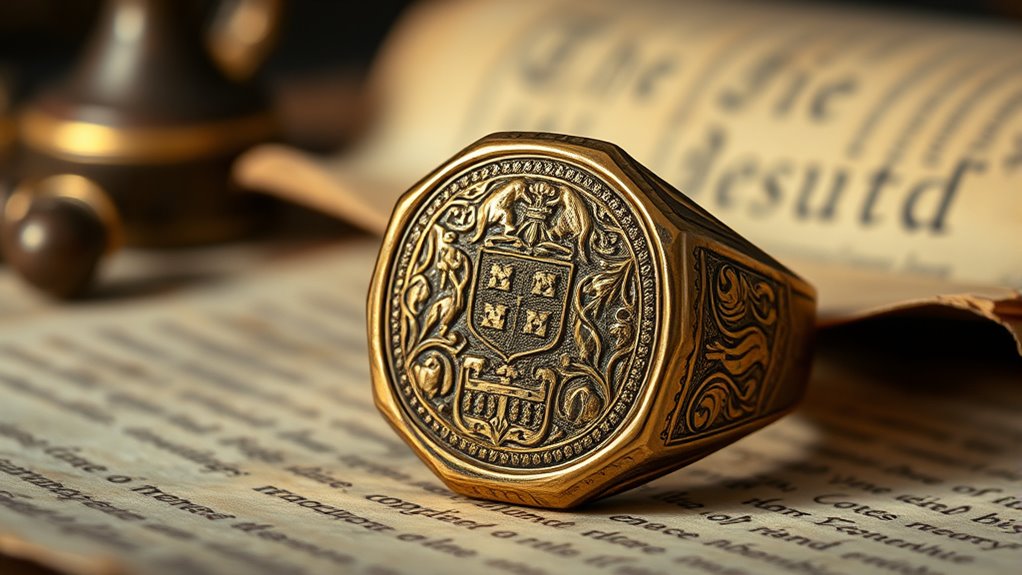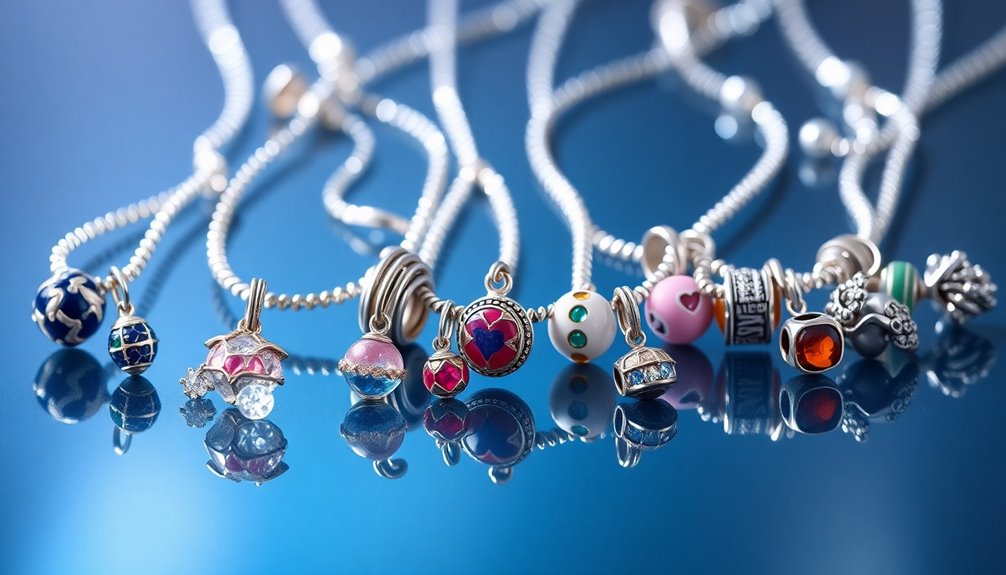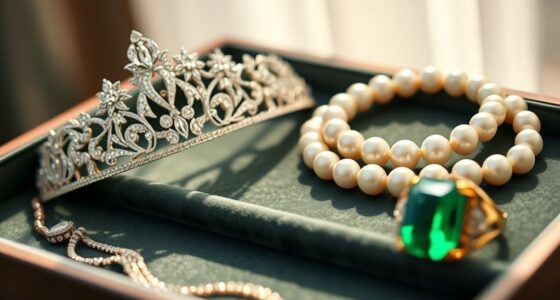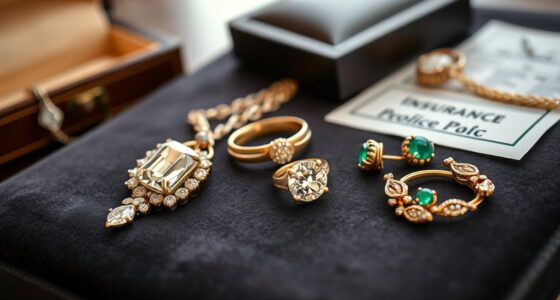Signet rings have a long history as symbols of authority, identity, and social status, dating back thousands of years. They feature heraldic symbols that represent family lineage, nobility, and allegiance. These rings were used to seal documents, ensuring authenticity and security. Royalty and noble families often crafted intricate designs that embodied power and tradition. If you want to explore how these timeless pieces evolved and their cultural significance, there’s much more to discover.
Key Takeaways
- Signet rings originated thousands of years ago as symbols of power, identity, and authority across ancient civilizations.
- They featured heraldic symbols representing family lineage, social status, or allegiance, often carved on the ring’s face.
- Royal and noble use involved pressing the ring onto wax to authenticate documents, symbolizing sovereignty and authority.
- Over time, heraldic designs became elaborate, serving as personal badges and markers of family heritage.
- Signet rings evolved into heirlooms reflecting social, political, and familial histories, maintaining their significance through generations.

Signet rings have a long-standing history that dates back thousands of years, serving as symbols of power, identity, and authority. These rings often feature heraldic symbols, which are intricate designs that represent family lineage, social status, or allegiance. When you wear a signet ring with heraldic symbols, you’re carrying a piece of history that communicates your heritage and personal identity. Historically, these symbols were carved into the face of the ring, allowing the owner to leave an impression in wax or clay to authenticate documents or seal messages. This sealing process added a layer of security and legitimacy, making the ring an essential tool for nobility, merchants, and officials alike. Additionally, the craftsmanship involved in creating signet rings often reflected the status and wealth of the owner, with precious metals and gemstones enhancing their prestige.
Throughout history, royal families used signet rings with royal family insignia as a mark of sovereignty. These insignia often included coats of arms, crowns, or other regal symbols that signified authority and legitimacy. If you’re interested in royal heritage, you’ll notice that many monarchs and aristocrats carried their royal family insignia on their signet rings. These rings weren’t just personal jewelry; they were powerful symbols of royal authority and sovereignty. When a monarch pressed their signet ring onto wax, they fundamentally stamped their royal signature, sealing official documents with the weight of their power. Because of their significance, royal signet rings were meticulously crafted and often passed down through generations, becoming treasured heirlooms that embodied continuity and stability of the monarchy.
The use of heraldic symbols on signet rings also served to reinforce social hierarchies and alliances. Nobles and aristocrats displayed their heraldic emblems proudly as a sign of their noble status and familial ties. If you’re exploring your own family history, you might find that your ancestors’ signet rings bore unique heraldic symbols that tell stories of alliances, land holdings, or titles. These symbols were carefully designed to be distinctive so that anyone familiar with heraldry could identify the family or individual simply by examining the ring’s emblem. Over time, the design of heraldic symbols became more elaborate, serving as both a personal badge and a visual record of history, alliances, and social standing. Furthermore, the evolution of heraldic symbols reflects changing social and political landscapes, making signet rings valuable artifacts for understanding historical contexts.
Frequently Asked Questions
How Are Modern Signet Rings Personalized Today?
You can personalize modern signet rings through a variety of customization options and engraving techniques. You might choose to add initials, symbols, or intricate designs using hand engraving or laser engraving for precision. Customization options also include selecting your preferred metal, size, and style. These modern techniques make your signet ring uniquely yours, reflecting your personality or heritage while adding a timeless touch to your jewelry.
What Materials Are Most Commonly Used in Contemporary Signet Rings?
You’ll find that silver, gold, and platinum are the most common materials used in contemporary signet rings. These choices reflect the historical symbolism of durability and status, maintaining the signet ring’s evolution from a mark of authority to a personalized piece. Modern designs often incorporate engraved initials or family crests, blending tradition with personal meaning, keeping the signet ring’s legacy alive in today’s fashion.
Are There Cultural Differences in Signet Ring Designs Worldwide?
You’ll find that signet ring designs vary widely across cultures, with over 60% showcasing distinct regional motifs. These symbolism variations reflect local traditions and beliefs, making each design unique. For instance, European rings often feature family crests, while Asian rings highlight mythological symbols. These cultural differences give each signet ring a deeper meaning, connecting the wearer to their heritage and regional identity.
How Do Signet Rings Influence Modern Fashion Trends?
Signet rings influence modern fashion trends by embodying family symbolism and historical significance, adding a touch of tradition and elegance to your style. You often see them used as statement pieces that convey heritage and personal identity. Fashion designers incorporate these rings into contemporary jewelry collections, blending old-world charm with modern aesthetics. Wearing a signet ring allows you to connect with history while making a unique, stylish statement today.
What Are the Care and Maintenance Tips for Preserving Signet Rings?
Think of your signet ring as a treasured keepsake that needs gentle care. To keep its shine, follow cleaning tips like using a soft cloth and mild soap, avoiding harsh chemicals. Store it in a jewelry box or soft pouch to prevent scratches, and remove it during activities that could damage it. Regular maintenance keeps your ring’s story vibrant and its craftsmanship shining for generations to come.
Conclusion
As you wear a signet ring today, remember it’s more than just jewelry—it’s a symbol of identity that’s lasted for centuries, from ancient Egypt to your modern office. Think of it as your personal smartphone, a tool that connects you to history and tradition. Whether engraved with family crest or initials, it’s your own digital signature, bridging the past and present in a single, timeless gesture.








